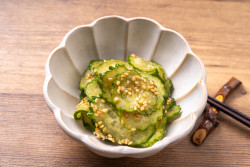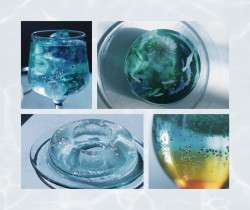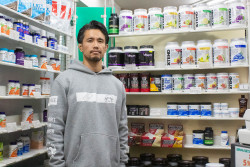
Originally published on metropolis.co.jp on March 2012

There is a great deal of discussion going on these days about radioactive contamination of the food supply. Naturally, we are all concerned about the safety of the food we eat, but how can you know if the carton of milk or bunch of broccoli you just threw in your cart is safe or not?
If you watch the news, you’ll see information almost every night about testing being done, but due to the complexity of the supply chain, it’s hard to translate that information into informed choices at the supermarket.
Part of the problem the government is facing when it comes to keeping the public informed is the sheer amount of food that needs to be examined, coupled with the relative rarity of the necessary testing equipment. The machines, which have to be imported, are bulky, and it can take over an hour to perform one test.
Most of the machines in Japan were previously used for daily water quality checks and sporadic food safety examinations. According to one testing center in Miyagi, they ran about four tests a day prior to March 11. Now they have to do about 100 per day, which means they are running all four of their machines on a 24-hour schedule to keep up. This pace is the norm now at centers across Japan.
This also means that some corners are cut in how the testing is done. The government manual for the testing of fish requires only that the muscle tissue of the fish be tested, since it is the most likely to suffer contamination. However, Japanese consumers often use other parts of the fish for cooking. Likewise, milk from several farms is mixed together at cooler stations and then tested for contamination. If the mix fails the safety test, the milk from all the contributing farms is banned. However, the mix can pass even if the milk from one contributing farm was originally over the limit.
Despite complaints that its testing protocols leave dangerous gaps, the ministry of health, labor and welfare has been scrupulous about releasing the test data it does have to the public. Detailed information is available on its website for 26 prefectures and is updated daily, including what was tested, where it was produced, who did the testing, and what the results were. Cesium levels are given regardless of whether they exceed or fall within government safety levels of 500Bq/kg for produce, fish, meat and grain, and 200Bq/kg for water and dairy products.
Looking through the test results over several days, only a handful of foods (less than 1 percent) tested exceeded the government safety levels. More importantly, it is clear what areas and products have little or no contamination at all. This information in particular is helpful for consumers who are mistrustful of the levels set by the government.
According to the Food Industry Bureau, Export Promotion Group in the ministry of agriculture, forestry and fisheries, the Japanese government has been working to increase the number of testing machines and facilities available in order to prevent any contaminated foods from entering distribution channels domestically or internationally. It has also been tightening agricultural standards.
In the meantime, local agricultural cooperatives are stepping into the gap. Many have begun doing private testing above and beyond government requirements, as well as developing decontamination procedures members can use on their land. Some of them even include the information in a QR code on their packaging. Try contacting a cooperative near you (www.zenchu-ja.or.jp/link; Japanese only) to find out what information they are providing to consumers, and you might just be able to soothe your mind as well as enjoying the benefits of buying local.
For test results, see http://meturl.com/tests. Japanese only, but charts are easy to decipher.







